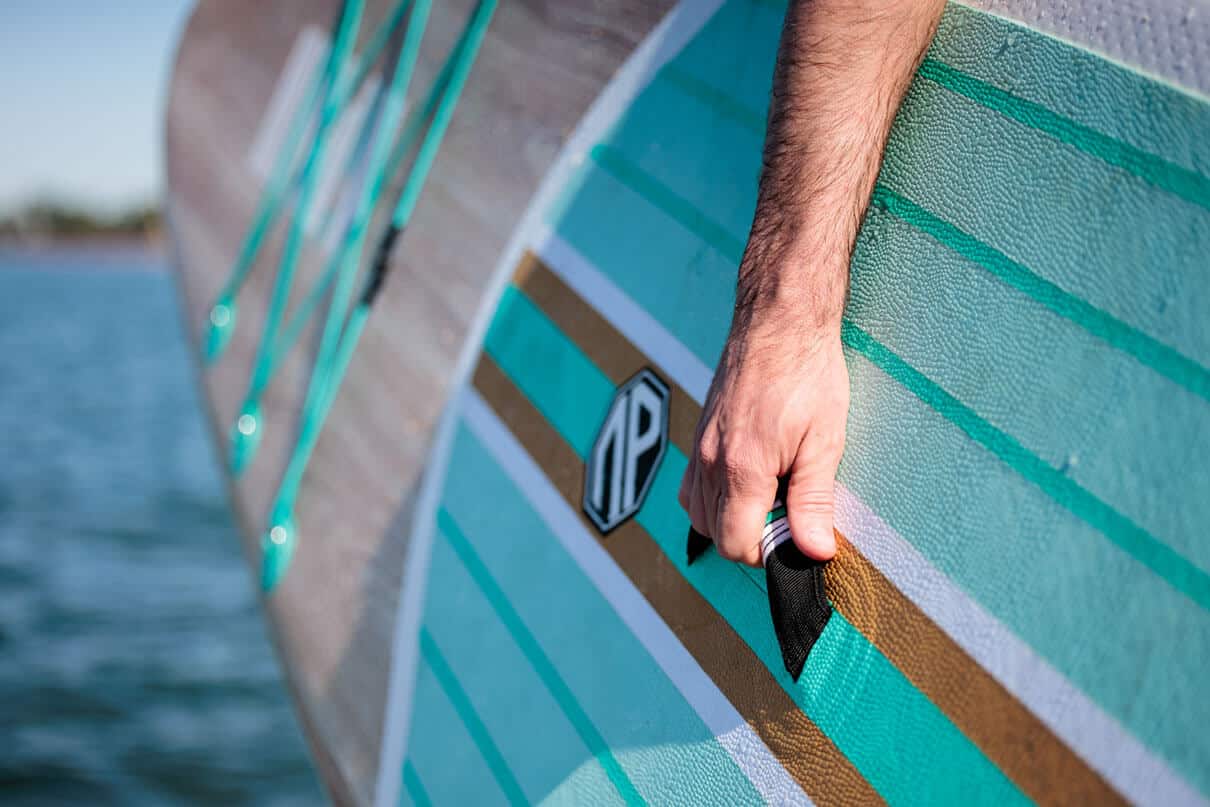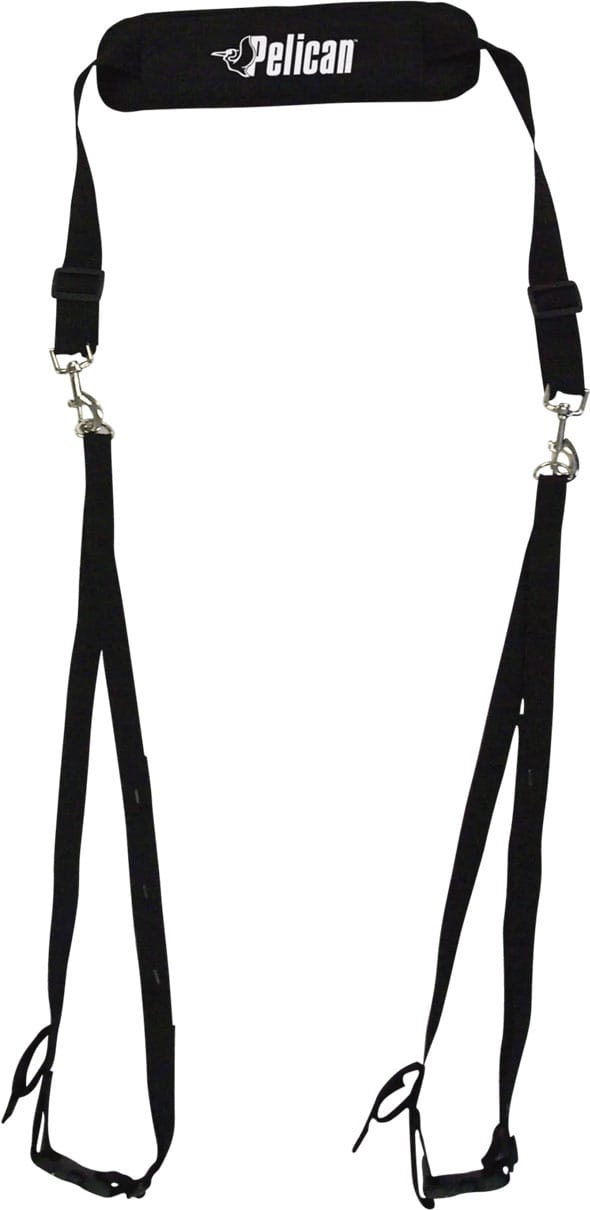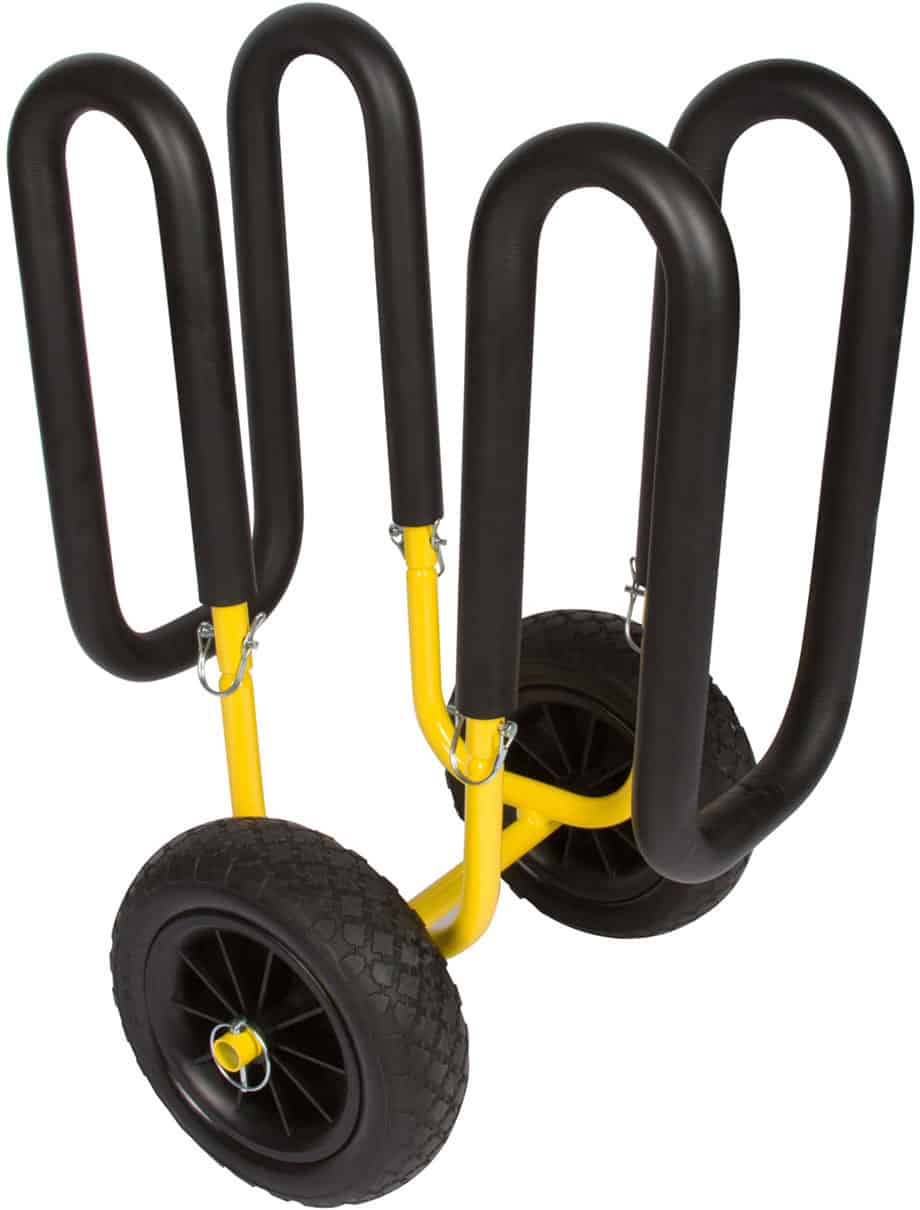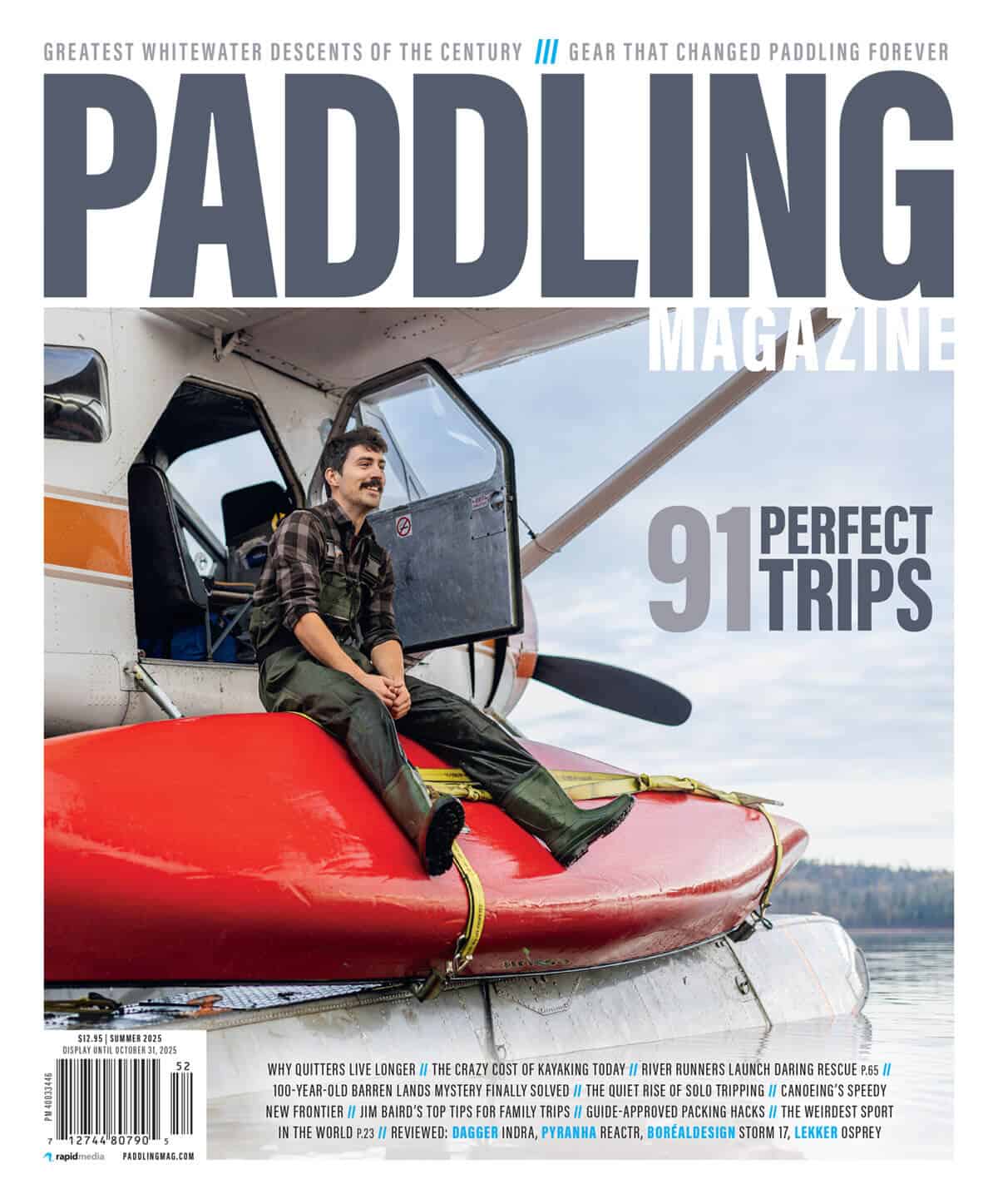When folks think about transporting their paddleboard, they often picture a car and roof racks. But not everyone considers the next step: how to get the board from the vehicle to the lake. Sure, paddleboards are elegant on the water, but their length, and sometimes their weight, can make them a bulky burden to haul from the parking lot to the shore. Here are seven tried-and-true strategies we use to make the carry a little easier.
How to carry your SUP
1 Under the arm
The way your SUP was meant to be carried. Most boards are designed with a central carry handle. It’s hands-down the easiest way to haul your board over short distances. Stand alongside the center of the board, put it on its edge so the deck padding is facing away from you, grab the handle like a suitcase and let the board rest under your arm. In windy conditions, it’s better to carry on the downwind side and use your other hand for support.

2 Up on top of your head
As surfers do, this method is great for medium distances. It can also be more comfortable for smaller paddlers or anyone with a heavier board. If hoisting your board by the handle isn’t sustainable, try carrying it on your head. Squat by the tail of your board with the fin facing up, then walk your hands up the rails and lift the board upright as you stand. Then center your head under the board and rise to a standing position with its weight resting on top of your head.
3 Server style
An alternative to the above: carry the board like a waiter balancing a tray palm-up, with the board resting on your shoulder. From the position above, shift the board onto one shoulder. One hand stabilizes the bottom rail while the other reaches up and over to keep it steady. This method can be more comfortable for some, but it is tough in the wind.

4 Double carry
Portage your board with a friend. One paddler takes the noses, and the other takes the tails. It’s a balanced and low-effort method for long walks down the beach.
5 Straps
A carry strap slings over your shoulder, freeing up your hands to carry other gear and saving you a second trip from the car. It’s also more comfortable for carrying your board than some of the methods above. There are plenty of inexpensive options online, or you can DIY with nylon webbing. Most straps clip to D-rings positioned near the board’s center or use oversized loops—one for the nose, one for the tail.
6 Carry bag
Whether your board is inflatable or rigid, there’s a carry bag to match. Inflatable boards are often sold as part of a package that includes a bag. These bags might be designed to sling over one shoulder, roll like a suitcase, wear like a backpack or all three. What is the simplest way to carry an inflatable over long distances? Deflate it and pack it up. Duh. But if you’re hiking to a remote lake, many SUP backpacks won’t cut it. They’re intentionally roomy to make packing up easy, but that extra space makes for a floppy load on a long and rugged trail. For treks to distant lakes, use a backpack with a hip belt, and cinch your board into a tight, compact bundle.

7 On wheels
For longer hauls, wheels are the best option. Carts let you steer with one hand while they do the lifting. Some carry your board rail up—great for maneuvering tight spaces like crowded boardwalks—others keep it flat. For traveling on sand, look for chunky balloon-style wheels to stay on top of the soft stuff.
Sling it, roll it, hoist it. | Feature photo: Owen Roth



 This article was published in Issue 74 of Paddling Magazine.
This article was published in Issue 74 of Paddling Magazine. 




